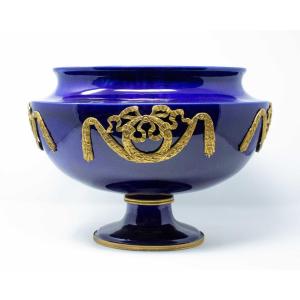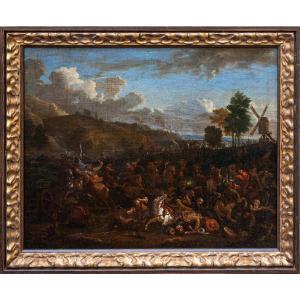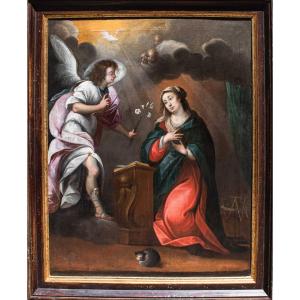Mystical wedding of Saint Catherine
Oil on canvas, cm 112 x 145
With frame, cm 129 x 161
This Wedding of Saint Catherine can be easily confused with a more common Madonna and Child and Saints, but the position of the hands of the saint on the left, devoid of attributes but caught in the act of reaching the right hand to the virgin who grabs her carrying it towards the Child in her womb, suggests the scene of the mystical marriage. The attributes of the other saints present are visible even if not manifest: the long cross of the Baptist is seen just above the head of Catherine, The armor and the spear of the holy warrior on the right are clearly visible but do not indicate with absolute certainty their identity while the young man behind him does not carry any sign able to reveal the exact correspondence. For the warrior you can advance the names of San Giorgio, San Michele or Sant'Alessandro, patron of Bergamo, city then part of the republic of Venice and artistically close to the Venetian painting; for the other, given the young age, the bald face and long hair you could suggest the figure of Saint John the Evangelist, homonymous with the Baptist and placed in parallel with it in the arrangement around the Virgin. The latter, together with Jesus, is in the centre of the scene and is the center around which both the characters and the entire architectural composition revolve, composed by a niche in front of the group that is invisible because of a white cloth stretched behind Mary. This compositional solution finds many references in the Venetian art at the turn of the 15th and 16th centuries, starting with Giovanni Bellini (1430-1516) and reaching the masters of the full sixteenth century; among these we can find references in the pose and expression of the Madonna: those of Vincenzo Catena at the Gemäldegalerie (circa 1512) and Houston (circa 1520),or those made by Palma the Elder and now kept at Palazzo Bianco (1525) and the Borghese gallery (1508). Moving in the early sixteenth century, we should certainly mention Cima da Conegliano and Rocco Marconi, with their Madonnas and Saints of Niva and Venice, examples of a long series of subjects very similar to each other that were great success in Venetian painting of the time. The colors are close to those of tonalism but they are adorned by an intense beguiling light that unifies the whole composition and gives a more spiritual and sacred sense. The attention to the details of the faces reveals a quality that dialogues with the genre of the portrait so much that there are three characters who look outside the field to involve the viewer, thus attracting the eye to the precise rendering of features and face. The different versions of this subject lead to the Venetian school and in particular to the workshop of Vincenzo Catena, a painter born in Venice, raised on the examples of Bellini, Alvise Vivarini and who confronted with the artists working in Veneto as Cima da Conegliano and Palma il Vecchio; from these experiences comes the portrait work, also visible in the faces of these characters, the formal plasticism, layout and coloristic rendering.
















































 Le Magazine de PROANTIC
Le Magazine de PROANTIC TRÉSORS Magazine
TRÉSORS Magazine Rivista Artiquariato
Rivista Artiquariato